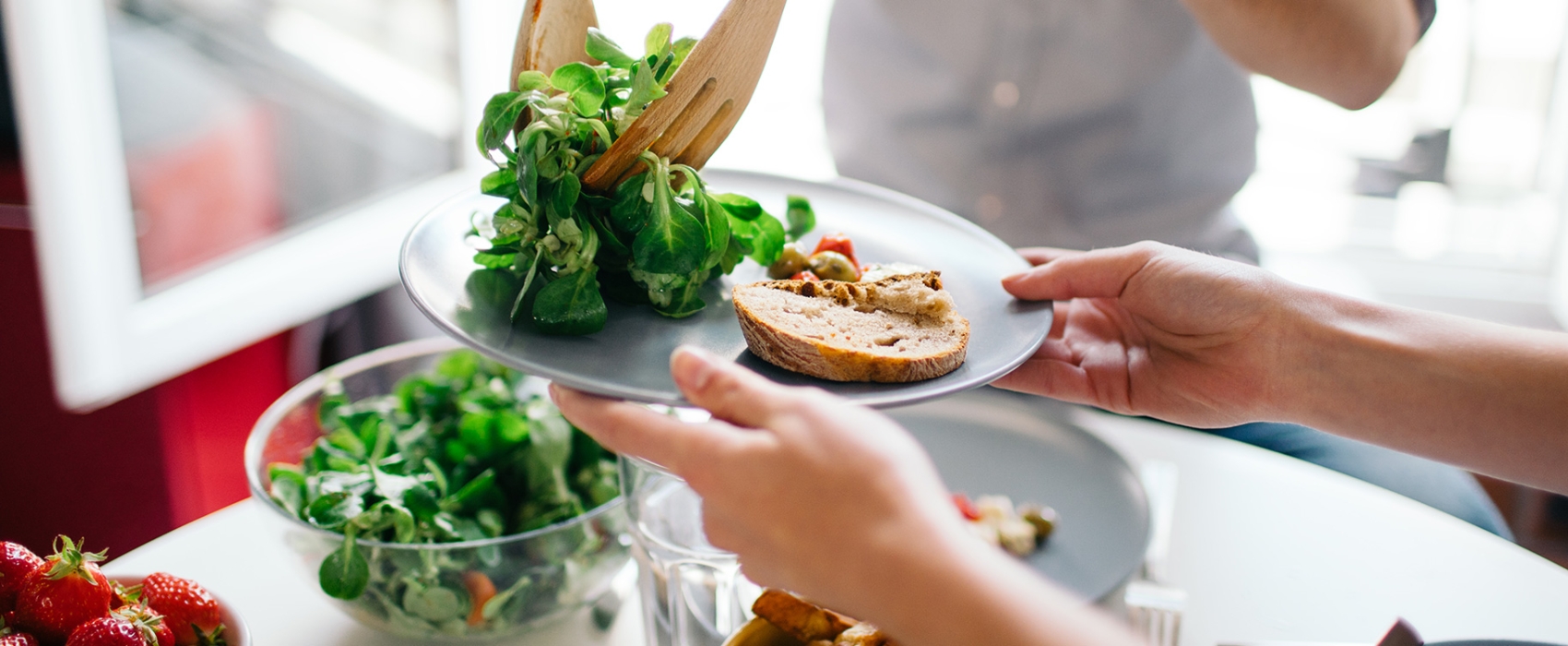Eating a balanced diet provides the foundations for good wellbeing, physical and mental health. Our bodies and minds need to receive the right fuel to perform at their best. Read more about what this means and looks like here.
On average, the diet of UK adults provides more than enough of most nutrients, but intakes of some vitamins and minerals have been shown to be low in some age/sex groups, e.g. iron in young women.
Try to eat a wide variety of foods, from the five main food groups, in the right proportions, consuming the right amount of food and drink to achieve and maintain a healthy body weight (people with special dietary needs or a medical condition should ask their doctor or a registered dietitian for advice).
The Eatwell Guide advises that to have a healthy, balanced diet, people should try to:
- Eat at least five portions of a variety of fruit and vegetables every day
- Base meals on 50% protein and carbohydrates and 50% from salad and vegetables
- Have some dairy or dairy alternatives (such as soya drinks)
- Eat less meat /processed meat and replace with beans, pulses, fish, eggs and other protein
- Choose unsaturated oils and spreads, and eat them in small amounts
- Drink plenty of fluids, e.g. at least six to eight glasses a day
If you’re having foods and drinks that are high in fat, salt and sugar, have these less often and in small amounts.
Eating five portions is not as hard as it sounds. A portion is:
- One apple, banana, pear or similar-sized fruit is one portion each
- A tablespoon of dried fruit, such as raisins, to your morning cereal
Try the following to increase your fruit and vegetables intake:
- Swapping your mid-morning biscuit for a banana and add a side salad to your lunch
- Have a portion of vegetables with dinner and fresh fruit with plain, lower fat yoghurt for dessert
Rehydrated or dehydrated? How can you tell?
If you are dehydrated, i.e. not drinking enough fluid, you may have some/all of the following symptoms:
- Feeling thirsty
- Dark yellow and strong-smelling pee
- Feeling dizzy or lightheaded
- Feeling tired
- A dry mouth, lips and eyes
- Peeing little, and fewer than four times a day
Tips to help:
- Try to maintain a healthy fluid intake, and do not wait until you feel thirsty to drink
- If you find it hard to drink because you feel sick or have been sick, start with small sips and then gradually drink more
- You can use a spoon to make it easier for your child to swallow the fluids
- You should drink enough during the day so your pee is a pale clear colour
- Drink more when there’s a higher risk of dehydrating. For example, if you’re vomiting, sweating or you have diarrhoea.
References:

